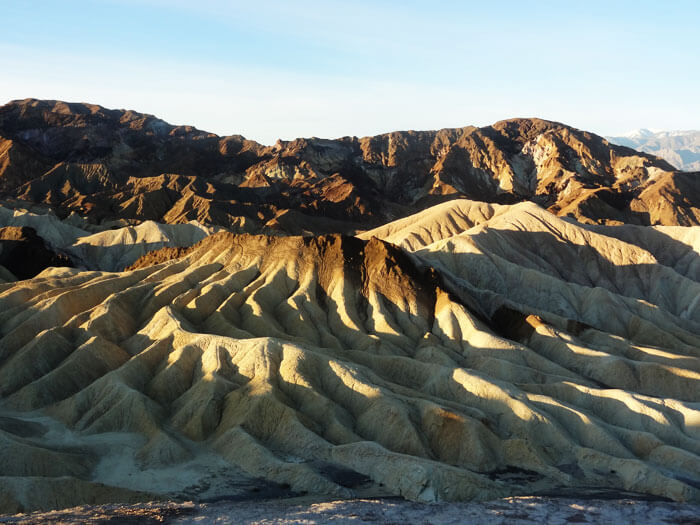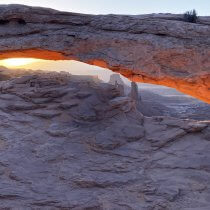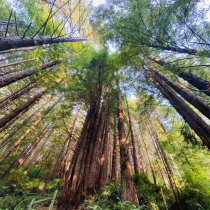Unveiling Death Valley: A Journey Through America’s Harsh and Beautiful Wilderness
In: Trail Notes

For years, I hesitated to visit Death Valley National Park. The name alone—Death Valley—didn’t sound inviting. A dry, hot climate, vast deserts, and isolated landscapes held little appeal to me. I imagined it as an arid wasteland, devoid of water and life. However, after spending a week exploring the park, my perspective changed entirely. I delved into its trails, learned about its natural history, and discovered its fascinating geology, flora, and fauna, including mammals, birds, and other wildlife. Below are some of the questions I had before visiting, along with the answers I uncovered during my journey.
Why is it called Death Valley?
Death Valley received its ominous name from a group of pioneers who became lost here during the winter of 1849–1850. Although only one member of their party is believed to have died, they feared the valley would claim them all. They were ultimately rescued by two young men, William Lewis Manly and John Rogers, who scouted a route out. As the group climbed over the Panamint Mountains to safety, one man turned back and declared, “Goodbye, Death Valley.”
Was Death Valley ever under the sea?
Though Death Valley is below sea level today, it has always been separated from the ocean by mountains. However, for hundreds of millions of years, the region was a seabed, as evidenced by the abundant layers of limestone, dolomite, and marble found there.
How long is Death Valley?
Death Valley stretches approximately 140 miles, from the head of Last Chance Canyon in the north to where the Amargosa River bends near Saratoga Springs in the south.
Where is the lowest point in the park?
Badwater Basin is the lowest point in North America, sitting 282 feet below sea level. It is a must-visit destination in Death Valley. Receiving less than two inches of rainfall annually, the basin traps water that evaporates, leaving behind a striking layer of salt deposits. Spanning nearly 200 square miles, the salt flats are among the largest protected in the world.
Where are the best spots for sunrise or sunset?
- Dante’s View: Perched at an elevation of 5,476 feet along the crest of the Black Mountains, Dante’s View offers breathtaking sunsets. From this vantage point, you can admire Badwater Basin, Telescope Peak, and the surrounding landscapes. A short trail leads to Dante’s Peak for an even more spectacular panorama, while nearby Coffin Peak offers an alternative perspective for adventurous hikers.
- Zabriskie Point: Renowned for its dramatic sunrise views, Zabriskie Point is an iconic Death Valley overlook. Its colorful ravines and hills, formed from sediments of the ancient Furnace Creek Lake, provide a stunning backdrop that highlights the area’s geological history.
Popular Hikes in Death Valley
- Golden Canyon – Gower Gulch Loop Trail:
- Distance: 4.3 miles
- Highlights: Towering golden walls, colorful rock formations, and a moderate uphill trek through Golden Canyon.
- Mesquite Flat Sand Dunes:
- Distance: 3 miles (out and back)
- Highlights: Iconic sand dunes surrounded by mountains, with sands originating from the Cottonwood Mountains.
- Mosaic Canyon:
- Distance: 4 miles (out and back)
- Highlights: Stunning water-polished conglomerate rocks resembling mosaics.
- Salt Creek Interpretive Trail:
- Distance: Short walk
- Highlights: A stream below sea level and the rare Salt Creek Pupfish, which thrive in extreme conditions.
- Wildrose Peak Trail:
- Distance: 8.4 miles (round trip)
- Highlights: Panoramic views, conifer forests, and elevation changes leading to incredible vistas.
- Telescope Peak Trail:
- Distance: 13 miles (round trip)
- Highlights: Strenuous hike to the park’s highest point with unmatched views.
- Ashford Canyon Trail:
- Distance: 4.2 miles (round trip)
- Highlights: Colorful canyons and remnants of an abandoned gold mining camp.
- Sidewinder Canyon Trail:
- Distance: 2–4 miles
- Highlights: Slot canyons, sculpted narrows, and natural bridges.
Death Valley National Park offers more than its name suggests. It is a land of contrast, history, and beauty. Exploring its vastness, from rugged peaks to salt flats, proved to be one of the most rewarding experiences I’ve ever had.
you might also like
-

Exploring Arches and Canyonlands National Parks: A High Desert Hiking Adventure
June 7, 2022
-

5 Compelling Reasons to Visit Great Basin National Park
January 10, 2022
-

A Journey Through the Giant Coast Redwoods of Northern California
September 6, 2021